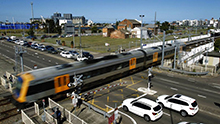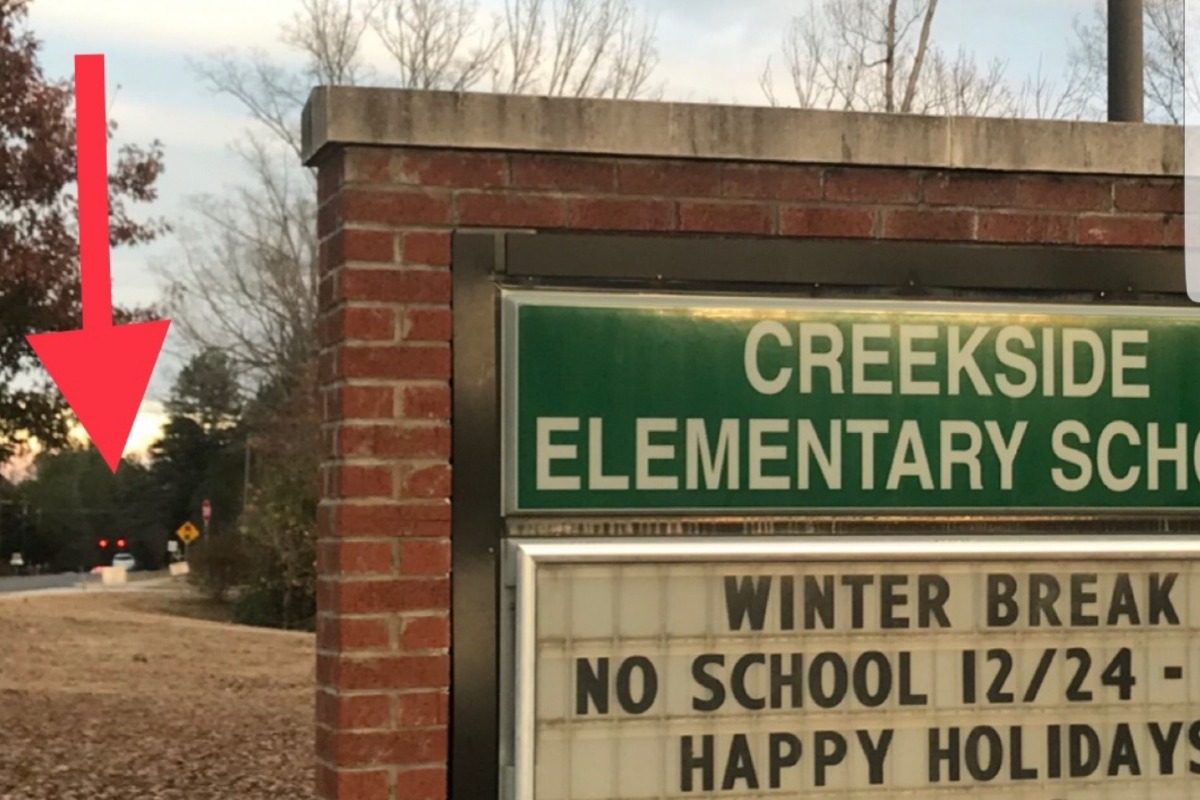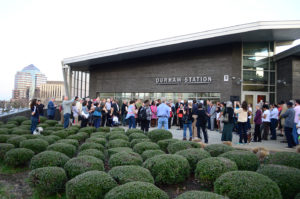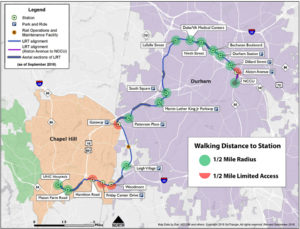Noise
Noise is part of everyday life, but excessive noise and particular types of noise have irrefutable negative impacts on health, welfare, and quality of life. Think, for example, about the difference between calming white noise (for example, ocean waves or soft music) and adrenalin-producing high-pitched noise (for example, a car alarm horn or fingernails on a chalkboard).
Please see the short video illustrating the sound of a light rail train in Charlotte stopping at a cross roads below.
Mounting scientific evidence points to the public health problems caused by environmental noise exposure. Some of the negative consequences of the wrong type of noise in the wrong location or at the wrong time of the day or night include increased stress, insomnia, anxiety, and inability to concentrate. Sudden noise increases from low background noise levels at night are particularly disturbing for sleep patterns. Proponents of the DOLRT are quick to assure us that the planned light rail is quiet and non-intrusive, but that is not strictly true.
While it is true that a light rail, which is powered by electricity and runs on a continuous rail, makes less noise in motion than the coal-driven trains from by-gone eras that went “clackety-clack” over metal tracks, make no mistake: a light rail brings noise to a community that was not there before. Here are some sources of light rail noise:
- Track noise
- Horns sounding at grade-level crossings
- Warning bells at stations and all grade-level crossings: Bells are sounded each station platform to warn passengers of an incoming train and at all grade-level crossings to warn motorists of danger. To be effective warning devices, these bells need to emit an attention-getting high frequency sound. Rail car movements are being planned every 10 minutes during rush hours and every 20 minutes at other times.
- Recorded voices when doors open and close at every stop and start (visualize your last trip on a tram at a major airport)
- Wheel squeal at braking and around curves
- People congregating at stations and upon entering and exiting the trains
- Industrial sounds, wheel squeal, and increased traffic at the maintenance facility, which operates 24 hours a day, 7 days a week, all year long
The maintenance facility (ROMF Railyard) for the DOLRT project would be built on Farrington Road near the border of Chapel Hill and Durham, across from the intersection of Ephesus Church Road and Farrington Road. If you’ve driven in that area, you may remember the Patterson Mill Store and picturesque historic green farmhouse adjacent to the parcel. It is down the road from Nantucket Grill. Of all the noise sources of concern, the noise produced from the maintenance facility, which will conduct maintenance operations on all rail cars each night, all night, is the hardest to ignore. According to data from Go Triangle, the maintenance facility is expected to produce 48 “noise incidents” each night and 32 “noise incidents” each day.
The extent of the noise that will be produced at the ROMF site is a hotly debated issue that turns on the reliability of data first given to the public by Go Triangle in October of 2018. If interested, you can read Go Triangle’s October 2018 Noise and Vibration Report in its entirety here, but recognize that the data appearing on p. 38 (Table 6-3) was changed by Go Triangle in time for the Durham City Council rezoning hearing in December, but has not been corrected on the Report as of yet. The correct, recently changed figures on Table 6-3 show that the noise impact on houses along Farrington Road is 0.1 point below “severe,” using FTA-mandated categories, not barely “moderate” as shown on the Report.
Concerns about noise at the site include the fact that 80% of a 100-foot buffer of mature forest will be clear-cut to make room for the light rail’s administrative offices, a train-sized garage to perform maintenance, complex tracks, and a railyard to store all train cars overnight and on non-peak hours when they are not in use. That 100-foot buffer provides protection from the noise of I-40 all along Durham County, but that protection has been waived at this site to accommodate the light rail. According to Go Triangle’s own noise study, clear cutting the existing mature forest will result in a doubling in intensity of present noise from I-40 for anyone presently protected by the existing buffer of mature trees. The debate turns on whether Go Triangle’s offer to build a 4-foot berm along part of Farrington Road and to replant young trees on the site is sufficient to compensate for the increased noise from the operations on the site as well as the increased noise from I-40 as a result of the clear-cutting operation.
An additional significant concern about noise at the site is wheel squeal. The squeal of train wheels on tracks is a familiar sound to anyone who has lived or worked near a train. All experts agree that wheel squeal is exacerbated exponentially when there are curves on a track. Because of the odd configuration of the site for the DOLRT maintenance facility (ROMF), there are numerous unusually sharp curves on the site, increasing the risks of wheel squeal. Go Triangle asserts that it will put grease on the tracks and flanges (apron-like apparatus) on the wheels to manage that noise as trains move on the tracks all day and throughout the night. Based on advice of experts and the experiences of railyards around the country, local residents are not confident those proposed fixes will solve the problems created by the unprecedented angle of the curves at this site.
Residents of Durham who live in an adjacent over-55 community are so concerned about the negative impact of railyard noise on their health that they filed a lawsuit in Durham County Superior Court on January 31, 2019. The lawsuit, a declaratory judgment action, challenges the legality of the City’s decision to rezone the site for this industrial use and asks the court to declare the zoning change to be null and void. Without the zoning granted by the City, the ROMF cannot be built on this site. Those seniors are joined by parents at Creekside Elementary School, which is less than 350 yards from the entry to the railyard, who are concerned about the effect of increased noise on their children’s well-being and ability to learn. Residents in surrounding communities and all over town have contributed funds to support the lawsuit. If you, too, have concerns about DOLRT, consider supporting this community challenge here. For more information about the ROMF, click here.











Follow Us